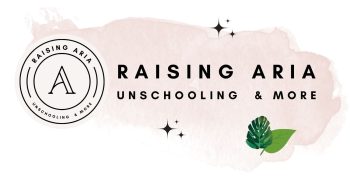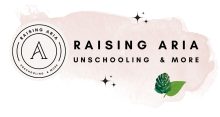In this post we will look at what the Montessori Prepared Environment is, what the elements are of creating the prepared environment, and tips for how you can create your own environment at home. To show you some examples I’ve also included what we have done at home (our floor bed and movement area / playroom are Montessori inspired, we made do with what we had, keeping in mind the elements of the prepared environment).
What is Montessori?

The Montessori Method is a form of education which is focused on self directed, self paced learning, founded by Maria Montessori. An important concept in this education method is The Absorbent Mind, which refers to the child’s ability to absorb information in a sponge like manner.
Also see: The Absorbent Mind by Maria Montessori Explained – What is it and how to apply it
What is the prepared environment?

The prepared environment is an important concept of the Montessori Method. The prepared environment is also known as the classroom, and it refers to a place where children learn, which is designed to facilitate maximum independent learning and exploration by the child.
Maria Montessori, the founder of the Montessori Method, realised the unique way in which children learn and understood the notion of a child’s absorbent mind (also see The Absorbent Mind by Maria Montessori Explained – What is it and how to apply it).
Features of the Prepared Environment
- Structure and order
- Clearly defined curriculum areas
- Materials are displayed in progression order
- Left to right orientation
- Freedom of movement and choice
- Emphasis on independence
- Freedom within limits
It’s also important to note that Doctor Montessori observed that children experience frustration in an adult-sized world. This is why she designed child-sized furniture, accessible low open shelves, and learning materials that easily fit in a child’s hand. Everything in the prepared environment is purposefully designed to support children’s independence and self-mastery.
What are the 6 elements of the prepared environment?
The Montessori prepared environment stresses order, beauty and simplicity, it is meant to be a calm and peaceful setting. There is a minimum of items and clutter. Everything has a place and it is clear how to restore the environment to order. Items in the environment should have a deliberate purpose, help to foster independence in the children, and be visually appealing to the children.
There are 6 key elements of the Montessori prepared environment:
- Freedom.
- Structure & Order.
- Reality & Nature.
- Beauty & Atmosphere.
- Social environment
- Intellectual environment
1) Freedom
Freedom allows movement by the child within an indoor environment as well as an outdoor environment if at all possible. A teacher’s role in establishing freedom is to protect the child’s ability to choose. Lessons should be brief so as not to interrupt the work cycle. Teacher directed competitions, rewards, and punishments will interfere with a child’s freedom and so are not a part of a Montessori classroom. As Dr. Montessori stated, “Such prizes and punishments are…instruments of slavery for the spirit…The prize and punishment are incentives toward unnatural or forced effort, and therefore we certainly cannot speak of the natural development of the child in connection with them” (Montessori Method, Montessori, p. 21).
2) Structure and order
The second component of the prepared environment is structure and order. For a child to internalise his own structure and order, it must be very apparent in the classroom. Materials are in their proper places, grouped according to area and arranged in sequence as to their degree of difficulty or complication. All of the materials should be in good repair with nothing broken or missing. https://magnoliamontessoriacademy.com/montessori-philosophy/the-prepared-environment/
3) Reality and nature
Reality and nature is the third component. Items in the classroom should be authentic and made from nature. For example, the use of wood, metal, and glass is ideal in setting up the classroom. In most situations, one item or material should be available for student use. Waiting to use a material encourages patience and allows the child to develop his grace and courtesy skills. “The child comes to see that he must respect the work of others, not because someone said he must, but because this is the reality he meets in his daily experiences” (The Absorbent Mind, Montessori, p. 165). Nature is a vital part of the classroom, not only in the materials used but in caring for live plants and animals as well. I remember when I was a child in Montessori school, each new school year we had to bring our own little plant to school and care for it daily on our own desks. I would usually pick a cactus as they’re hard to kill (haha).
4) Beauty and Atmosphere
The fourth component is beauty and atmosphere. Montessori environments should be beautiful. The classroom should be an inviting place that is based on simplicity, good design, and quality. It should be bright, cheerful, and harmoniously arranged. The atmosphere is relaxing, warm, and invites participation. Teachers must be cautious of clutter by not allowing it to be in the classroom.
5) Social environment
In looking at the whole child, his place in a community cannot be ignored. It is this aspect of the prepared environment that gives the child his sense of ownership and responsibility. Once a child has taken ownership of his environment, he will seek to maintain its order and care. Community life also includes a child’s relations with other members of the classroom. Because of the multiple ages within the class, children take on different roles of helping others, interacting socially, solving conflicts, and acting as role models.
6) Intellectual Environment
With the other five elements in place, we can work on the intellectual side of schooling. Sometimes, book learning is the only focus in schools. With the Montessori method, however, we take a more holistic approach. Because children feel safe and supported in their environment, they’ll have the focus and interest they need to learn naturally.
Design Principles For Indoor Montessori Classroom

“To assist a child we must provide him with an environment which will enable him to develop freely.”
Maria Montessori
When designing an indoor environment, one needs to make sure it is is carefully prepared to enable it to be a nourishing place for the child, and at the same time keeping in mind the 6 key principles noted above.
A child’s mind is constantly absorbing all the experiences in the environment which lays the foundations for later learning experiences. Hence the quality of a child’s early environment is of vital importance.
Design Principles for Outdoor Montessori Classroom
The environment must be rich in motives which lend interest to activity and invite the child to conduct his own experiences.
Maria Montessori – The Absorbent Mind
When designing an indoor or outdoor Montessori prepared environment / classroom, one can also be lead by these key tenets:
- Child Led
- Well Prepared Environment
- Teacher as Guide
- Liberty within wide parameters
- Intrinsic Motivation
- Observe the Child
As stay at home parents you can easily create SO many outdoor Montessori Activities but in the classroom, it’s all about removing the separation between indoors and outdoors which allows children to freely and naturally follow their own desires.
Our Montessori Environments at Home
Ever since the newborn stage, we have our prepared Montessori environment at home in the form of a Montessori Inspired movement and play area, as well as a floor bed.
As you might have read in Our Montessori Inspired Movement Area and Playroom Setup For 8 Month Old Baby or Our Montessori Inspired Movement Area and Playroom Setup For 6 Month Old Baby we LOVE the Montessori Method for our little one and follow her lead as to when she’s ready for different material.

Tips for Creating Your Own Montessori Prepared Environment at Home
- Make sure that the environment is attractive, orderly and clean.
- Make sure there is adequate open space for children to easily move around, and for sitting together and reading a book for example. We have a cozy chair with cushions and a blanket where we read together (although we tend to read sitting on our muscle mat also).
- Check that the Montessori materials can be independently accessed from low shelves.
- Check that children can also help maintain the order on these shelves.
- Have appropriately-sized tables and chairs so the children can sit and move with ease. There should be a few interesting, real-life pictures at child’s-eye level, a few beautiful objects that could break easily, living plants, and pets (even small, non-poisonous reptiles and fish are fine).
In Summary
The Montessori Prepared environment is a key aspect of early childhood development as a child’s mind is constantly absorbing all the experiences in the environment. The prepared environment isn’t only pleasing to look at, it’s meant to have this wonderful calm, beautiful and realistic feel – which is interesting for the children (as well as for many parents who see it for the first time!). The prepared environment (indoor and outdoor) is carefully designed by the teacher, and will help the child to independently explore and become competent.











[…] The guide prepares the classroom environment in a thoughtful and intentional manner, also called “The Prepared Environment“. […]
[…] Prepared Environment […]
[…] Prepared Environment […]
[…] Prepared Environment […]